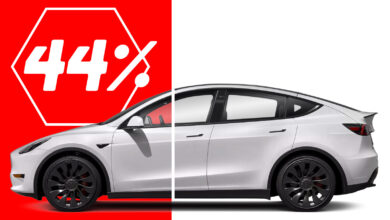Powering Forward: South Africa’s EV Revolution Has Begun

The National Automobile Manufacturers of South Africa (Naamsa) has released its Q1 2024 report, highlighting significant developments within the nation’s automotive sector. As South Africa commemorates the centenary of vehicle manufacturing, starting with the iconic Model T Ford on January 19, 1924, the industry faces a transformative period marked by economic challenges and a shift towards electric mobility.
Surge in Electric Vehicle Sales
A notable trend is the new energy vehicle (NEV) sales increase. NEV sales, which include battery electric vehicles, Plug-in hybrids and hybrids, surged by 82.7%, from 1,665 units in Q1 2023 to 3,042 units in Q1 2024. This growth builds on a significant year-on-year increase of 421.7% from 896 units in 2021 to 4,674 units in 2022. By 2023, NEV sales had increased by another 65.7% to 7,746 units, accounting for 1.45% of total new vehicle sales, up from 0.88% in 2022.
Table: Diversity of Drivetrain Sales in South Africa*
*Copyright: Naamsa: QUARTERLY REVIEW OF BUSINESS CONDITIONS: NEW MOTOR VEHICLE MANUFACTURING INDUSTRY / AUTOMOTIVE SECTOR: 1st QUARTER 2024
Policy and Future Outlook
The December 2023 unveiling of the Department of Trade, Industry and Competition’s (dtic) Electric Vehicle White Paper marks a pivotal step in South Africa’s automotive evolution. This comprehensive roadmap outlines policy interventions to transition the industry from producing internal combustion engine (ICE) vehicles to a dual platform that includes EVs by 2035. The White Paper aligns with the South African Automotive Masterplan (SAAM) 2035, seeking to unlock the full potential of NEVs and support national climate change efforts.
Furthermore, introducing an investment allowance for new EV investments in March 2026 allows 150% of qualifying investment spending to be claimed in the first year. This initiative is expected to attract investments, foster innovation, and drive growth within South Africa’s automotive sector.
Employment and Production Trends
As of March 31, 2024, the automotive industry employed 33,374 individuals, a slight decrease from 33,379 at the end of 2023. This minimal decline contrasts with the employment growth observed in 2023, driven by a recovery to pre-pandemic levels and the introduction of new-generation models by various Original Equipment Manufacturers (OEMs). However, persistent supply chain disruptions, such as port congestion and a global semiconductor shortage, continue to impact production, reflecting ongoing challenges in capacity utilization.
Sales and Market Dynamics
The first quarter of 2024 saw a 5.6% decline in aggregate new vehicle sales compared to the same period in 2023, though there was a marginal 0.2% increase from the fourth quarter of 2023. Cost pressures and affordability remain crucial factors influencing consumer purchasing decisions. Despite these challenges, new domestically manufactured light commercial vehicles contributed to a slight improvement in performance from the previous quarter. Year-on-year, the extra heavy commercial vehicle sector benefitted from continued reliance on road transport due to inefficiencies in the rail system.
Challenges and Export Performance
Despite these positive developments, the industry faces hurdles. Domestic vehicle production in Q1 2024 declined by 2.2% compared to Q1 2023, attributed to a constrained domestic market and lower vehicle exports. Vehicle exports decreased by 3.7% from Q1 2023 to Q1 2024, following a record 399,594 vehicles exported in 2023. The ongoing global semiconductor shortage affects OEMs differently, further complicating production dynamics.
Business Confidence
The Naamsa CEOs Confidence Index, an indicator of business confidence in the automotive sector, reflects cautious optimism for the first quarter of 2024 compared to Q1 2023. This sentiment underscores the industry’s resilience and adaptation to current and future economic conditions.
South Africa’s automotive industry stands at a crossroads as it navigates economic pressures, supply chain disruptions, and a significant shift towards electric vehicles. The centenary celebration of vehicle manufacturing highlights a rich legacy, while the robust increase in EV sales and supportive policy measures signal a promising future. As the nation aims to align with global trends in sustainable transportation, the next decade will be crucial in determining the industry’s trajectory and impact on the broader economy.
Main image: Shutterstock-2257431417 Lucian Coman. In-article image: courtesy of Naamsa.



